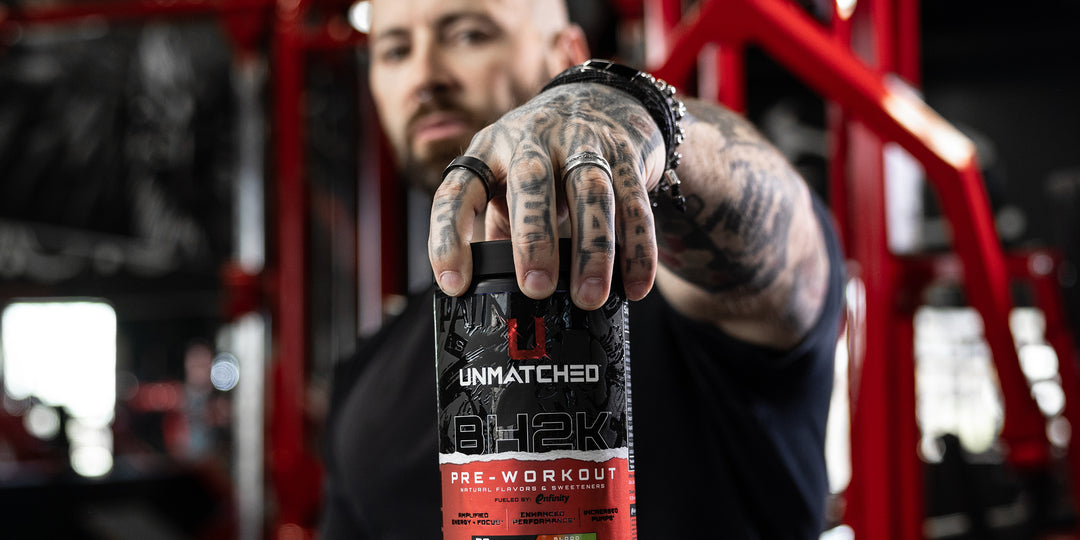CreGAAtine Full Writeup
CreGAAtine® is a new and innovative ingredient combining creatine monohydrate and guanidinoacetic acid (GAA). We can break this ingredient down into two separate parts and summarize how the combination of these two compounds works together to produce desired results.
Creatine Monohydrate
Sometimes called the “grandfather” of dietary supplements, creatine is, along with caffeine, one of the most extensively studied dietary compounds. Certainly, it is the most well-studied ergogenic aid. The extensive amount of data on creatine demonstrates that it positively contributes to dilation of the vasculature, plasma-nutrient mobilization, post-workout nitrogen retention and protein synthesis, along with dose-dependently increasing contractile force through ATP (adenosine triphosphate) provision (i.e., it helps support increased strength).
If the human body could be considered a bank account, then ATP would be the currency, and every cellular process would be like spending a little money from that account. Without making a deposit, the account runs dry (fatigue). Unfortunately, making a direct deposit to that account in the form of exogenous adenosine triphosphate is impossible, given that ATP itself is incredibly unstable. The use of supplemental creatine, however, is analogous to making a deposit in the body’s energy bank, given that creatine is eventually metabolized to ATP via several steps. In skeletal muscle, creatine is first phosphorylated into its primary derivative, known as phosphocreatine (PCr), by the muscle-specific creatine kinase, creatine kinase-MB (muscle-brain). Following the phosphorylation of creatine, phosphocreatine may then anaerobically donate a phosphate molecule to adenosine diphosphate (ADP) to form the ATP required during the initial stages of intense muscular contraction. The result is not only an increase in contractile force, but also an increase in potential type IIx (‘fast-twitch’) muscle recruitment – the type of muscle fibers which are not only traditionally associated with speed, strength, and impressive physiques, but which are also unsurprisingly the most energy-demanding fiber types. Literally speaking, creatine contributes to the building of muscle.
Through the ATP provision just described, as well as effects on nutrient mobilization, protein-sparing, and fluid dynamics, creatine has been consistently demonstrated to increase both lean mass and muscle mass in clinical data. In the short-term, these effects are most likely the result of extra-cellular fluid retention normally associated with exogenous creatine use. In the long term, these effects are likely attributable to creatine’s collective effect on muscle metabolism. The most recent research on creatine suggests it exerts direct effects on muscle metabolism, including altering the expression of genes responsible for ribosomal assembly, attenuating the breakdown of leucine, and most famously, by expanding cell volume.
Guanidinoacetic Acid
A less commonly known substance, GAA, has been a part of human nutrition since the 1950s. It is a natural organic compound known for its utilization in creatine biosynthesis but has also demonstrated beneficial energy-boosting effects in various studies. It has also been suggested to trigger several creatine-independent mechanisms that can provide benefits for the human body. Besides being a direct precursor to creatine, GAA can also reduce blood glucose concentration, spare arginine to be used for muscle protein synthesis, modulate taste, and perhaps alter methylation and fat deposition in organs such as the liver.
Combination
Now that we know a little bit about the two components of CreGAAtine®, what makes their combination so special? This blend shows a vastly superior effect when compared against creatine, or its other various forms. CreGAAtine® can boost muscle and brain energetics with superior creatine increasing effects. In studies, CreGAAtine® was shown to boost creatine concentration in the skeletal muscle but up to 16.9% over the course of 4 weeks. Creatine supplementation alone equated to roughly 2% increase. So, we are looking at over an 800% increase in skeletal muscle creatine concentration with CreGAAtine® supplementation. CreGAAtine® is also able to cross the blood brain barrier much more intact than traditional creatine on its own. CreGAAtine® has been shown to increase creatine levels in the brain by up 3.9x in grey matter and 1.9x higher in white matter. Additionally, CreGAAtine® binds to multiple receptors to allow for up to 4 ways to enter the cell, versus the 1 way that creatine alone can. This may not sound negative, but with only one way to enter the cell, this can lead to an oversaturation over continual use which can result in a lower capacity to transport creatine into the cell. Basically, there is a backlog which prevents an adequate supply of creatine to its targets. With CreGAAtine’s® 4 ways to enter the cell (GABA receptors, Taurine receptor, Passive Diffusion, traditional creatine receptors), it is rapidly converted to creatine, thus increasing creatine levels. There are also no known side effects of CreGAAtine®, meaning no bloating, water retention, GI distress, etc.
CreGAAtine® is a new and innovative combination of ingredients supplying all the traditional benefits of creatine monohydrate (explained above) along with the added benefits of guanidinoacetic acid to kick those benefits up a notch so you can reap every single benefit and make more progress towards your overall health and wellness goals.


